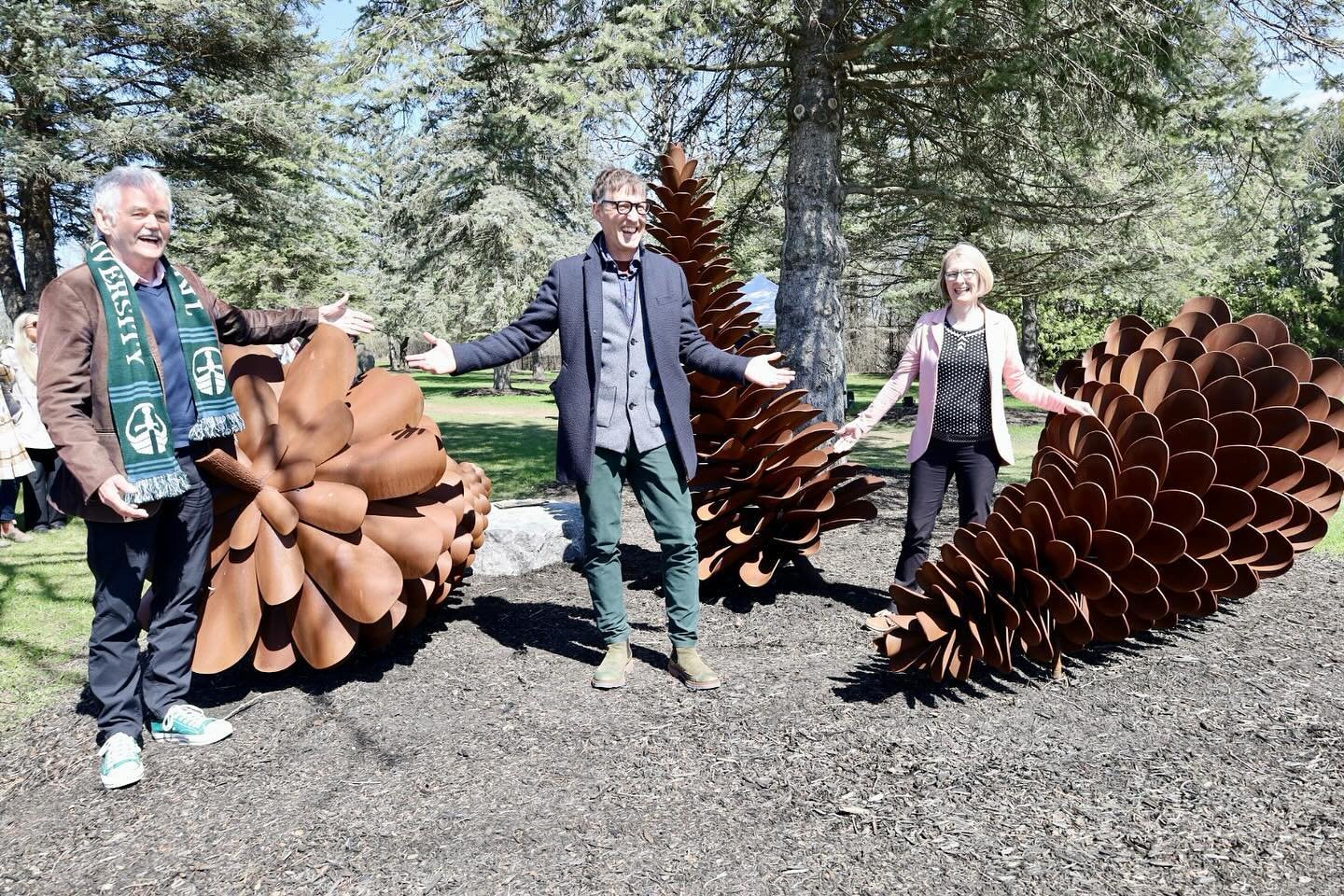Trent University Celebrates Public Sculpture At Campus Entrance
/Trent University celebrated the art piece, ‘Potential,’ three pinecone sculptures at the entrance of the Symons Campus and was created by artist Floyd Elzinga.
Dr. Leo Groarke, Trent's president and vice-chancellor (left); Floyd Elzinga (middle) and Suzanne Bailey, Trent’s associate dean of graduate studies (right) with ‘Potential.’ Photo by David Tuan Bui.









